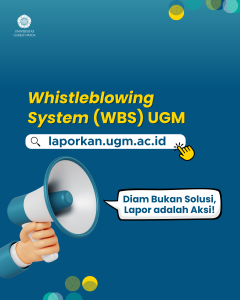In today’s digital era, technology plays an increasingly important role across various fields, including dental health and conservation. With ongoing innovations, dentists and other oral health professionals now have access to advanced tools that enhance diagnosis, treatment, and patient education in more effective and efficient ways. This article explores the applications and benefits of technology in dental conservation.
Applications of Technology in Dental Conservation
a. Augmented Reality (AR) and Virtual Reality (VR)
AR and VR technologies are increasingly being utilized in dental education. These technologies offer dental students hands-on experiences to better understand complex procedures and techniques in dental conservation. A study conducted by Gabrielle Chikanaya Atmadja, a student at the Faculty of Dentistry, Universitas Gadjah Mada (UGM), under the guidance of Dr. drg. Rini Widyaningrum, M. Biotech; drg. Aryan Morita, M.Sc., Ph.D.; and Dr. drg. Indra Bramanti, Sp.KGA(K)., M.Sc., highlights that AR and VR allow students to practice in a safe, controlled environment, improving both their skills and confidence when performing real-life procedures.
b. Digital Imaging and Radiography
Digital imaging technologies, including digital X-rays and 3D scanning, play a crucial role in diagnosis and treatment planning. High-quality imaging enables dentists to accurately identify dental issues and determine the most appropriate conservation measures to address them.
c. Practice Management Software
Modern practice management software helps dental clinics manage appointments, patient records, and billing processes more effectively. These tools allow dentists to provide more organized and efficient care, ensuring optimal service delivery to patients.
Benefits of Technology in Dental Conservation
a. Enhanced Diagnostic Accuracy
Advanced technologies such as AR, VR, and digital imaging enable dentists to make more accurate and precise diagnoses. This is critical in determining the most effective conservation treatments and preventing minor issues from becoming more serious.
b. Improved Patient Experience
Technology not only benefits practitioners but also enhances the overall patient experience. For instance, AR and VR can be used to help patients better understand upcoming procedures, reducing anxiety and uncertainty during treatment.
c. Optimization of Time and Resources
Modern tools and technologies help dentists save time in both diagnosis and treatment. Processes that once took considerable time can now be completed faster, allowing dentists to treat more patients in the same period.
d. Better Training and Education
Education becomes more interactive with the integration of AR and VR. Dental students can practice without the risk of harming patients, enhancing their understanding of complex conservation techniques and producing more competent, practice-ready professionals.
Challenges and Considerations
Despite its many advantages, the integration of technology in dental conservation presents several challenges, such as high implementation costs and the need for adequate staff training. Moreover, dentists must maintain a human-centered approach in their practice, recognizing the importance of personal interaction in healthcare.
***
Technology plays a vital and ever-growing role in dental conservation. By leveraging tools such as AR, VR, and digital imaging, dentists can improve diagnostic accuracy, patient experience, and operational efficiency. While challenges remain, the benefits of these technologies make a significant contribution to overall oral health improvement. For practitioners, staying up to date with technological advancements and continuously improving their skills is key to delivering optimal patient care.
References
Gabrielle Chikanaya Atmadja, Dr. drg. Rini Widyaningrum, M. Biotech; drg. Aryan Morita, M. Sc., Ph. D.; Dr. drg. Indra Bramanti, Sp.KGA. (K)., M.Sc., The Use of Augmented Reality and Virtual Reality Technology in Dental Education, https://etd.repository.ugm.ac.id/penelitian/detail/216593
Author: Rizky B. Hendrawan | Photo: Freepik



